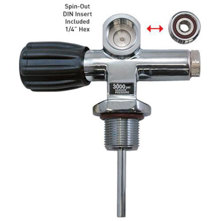halocline
Contributor
I hear what you're saying. This is, I guess, part of the very question. Is there something about the one-hand drill that gives rise to better line control, buoyancy control, etcetera? The only advantage to the one-hand drill that I can think of (given what I know) is that one can still manipulate a light while performing a shut-down. You can't do that with a two-hand drill.
Are you confusing the valve drill with an emergency procedure for a free flow in doubles? There is a difference, in an emergency the first step is to try to ascertain where the leak is coming from, and signal your teammates that you have an emergency. If it's obvious where the leak is coming from (i.e the 2nd stage in your mouth or the one on the necklace) then you just shut down that post.
The valve drill is simply about developing a methodical way of manipulating each valve while maintaining good buoyancy, trim, and light management. It's not directly an emergency procedure. The skills developed are useful in a real leak, but steps in the procedure are different. In my cave classes I learned both.
That said, imagine you have a sudden leak in a cave or some other technical dive where you can't surface immediately and you must control your buoyancy and trim. Do you really want to be manipulating both valves at the same time? You definitely want to avoid shutting off both valves simultaneously. Even a severe leak will give you several minutes of remaining gas, and since you are diving with correct gas management, your team has enough gas to get you to the surface even if you lost everything in both tanks. So a few seconds is not life-or-death. But failing to adequately signal your team-mates and accidentally closing both your valves could certainly be problematic.





